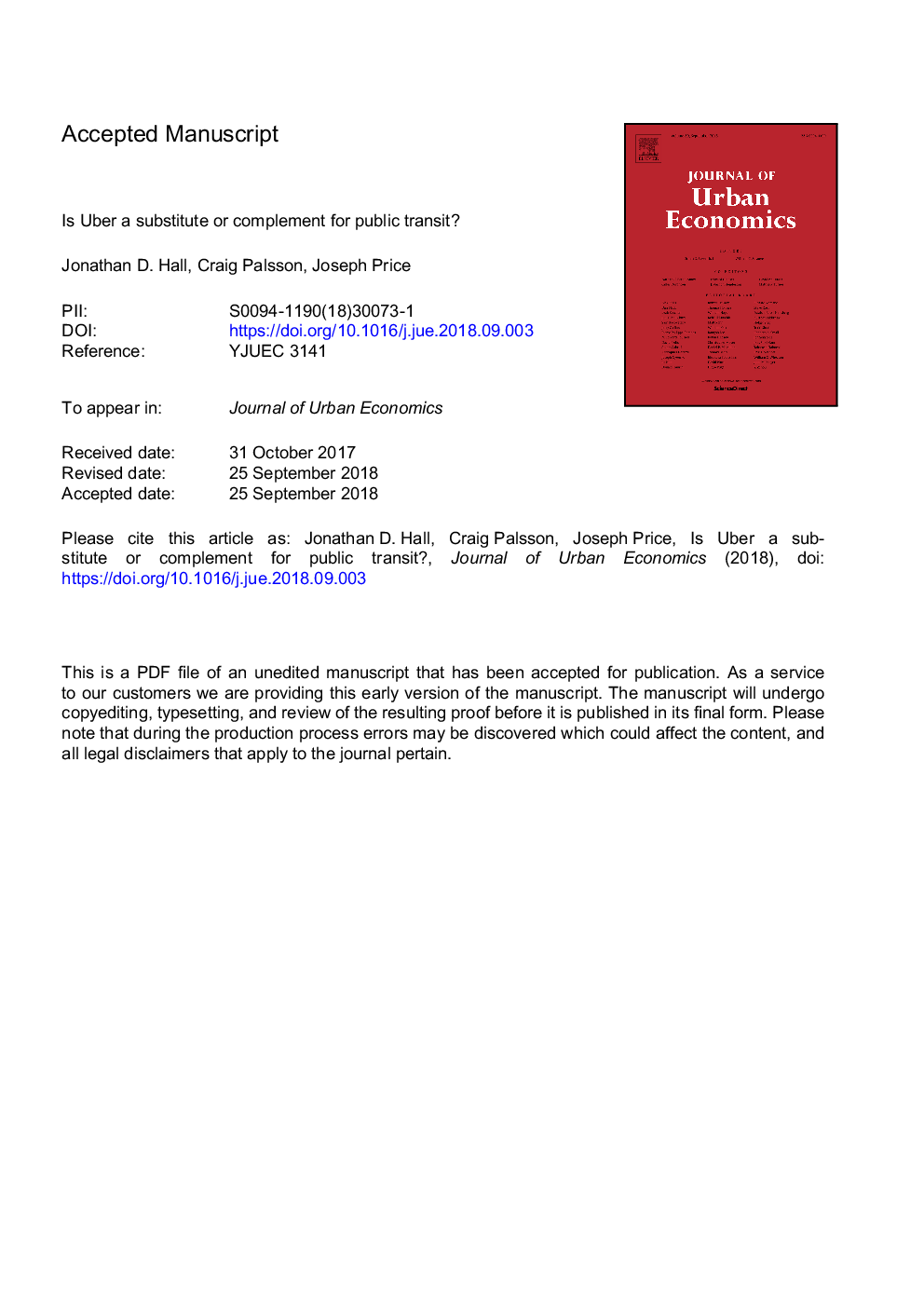| Article ID | Journal | Published Year | Pages | File Type |
|---|---|---|---|---|
| 11263254 | Journal of Urban Economics | 2018 | 21 Pages |
Abstract
How Uber affects public transit ridership is a relevant policy question facing cities worldwide. Theoretically, Uber's effect on transit is ambiguous: while Uber is an alternative mode of travel, it can also increase the reach and flexibility of public transit's fixed-route, fixed-schedule service. We estimate the effect of Uber on public transit ridership using a difference-in-differences design that exploits variation across U.S. metropolitan areas in both the intensity of Uber penetration and the timing of Uber entry. We find that Uber is a complement for the average transit agency, increasing ridership by five percent after two years. This average effect masks considerable heterogeneity, with Uber increasing ridership more in larger cities and for smaller transit agencies.
Related Topics
Social Sciences and Humanities
Economics, Econometrics and Finance
Economics and Econometrics
Authors
Jonathan D. Hall, Craig Palsson, Joseph Price,
